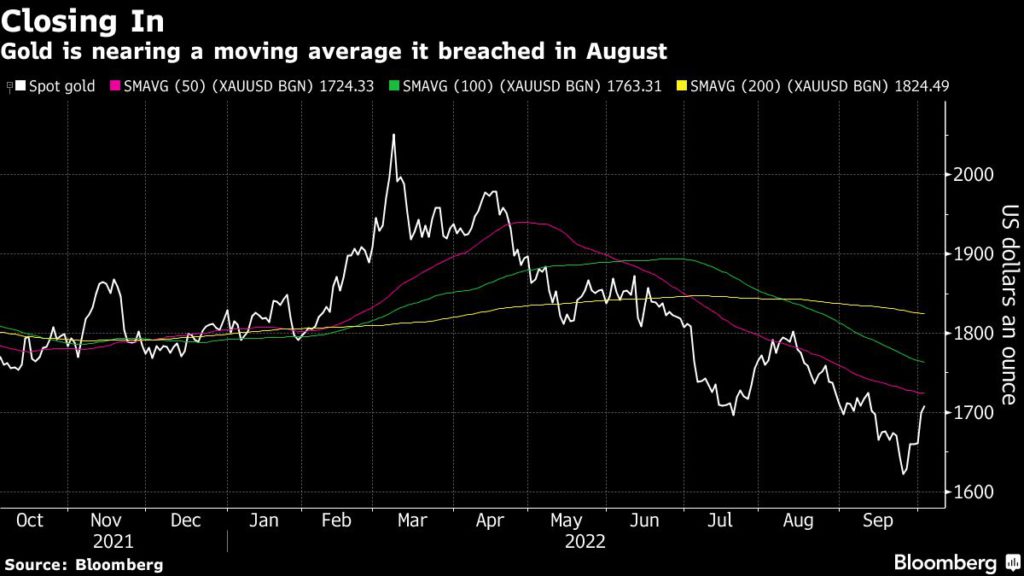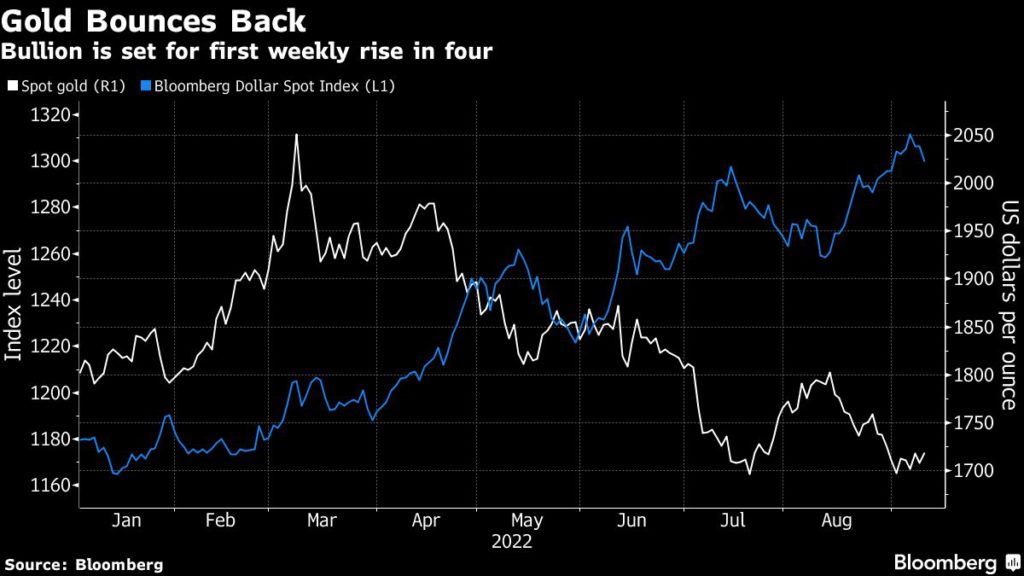Gold price breaks $1,700 as weak US data shifts sentiment


[Click here for an interactive chart of gold prices]
Meanwhile, benchmark US 10-year Treasury yields fell to a near two-week low, while the dollar extended its decline, making gold cheaper for other currency holders.
Bullion is now closing in on its 50-day moving average after surging Monday, when a US manufacturing gauge slumped more than expected. The price has traded mostly below the technical marker since April, a sign of poor sentiment that saw the safe-haven metal slump into a bear market.
Now the metal is at a crucial juncture as traders await US nonfarm payrolls this week for more clues on the future path of central bank monetary policy. A weaker-than-expected print could further diminish rate hike expectations, bolstering bullion at a significant technical turning point.
“Gold has broken the $1,700 an ounce mark again meaning that the break below $1,660-$1,700 an ounce was for me a false break,” Georgette Boele, an analyst at ABN Amro Bank NV, said in a Bloomberg note. “We probably have seen the lows for now.”
Other US employment data, including job openings and the ADP Research Institute’s figures will also be key this week.
“If the jobs data comes out weaker-than-expected, gold will rally. If it comes out much stronger, the market might interpret that as well, the Fed can keep going here with rates,” Bob Haberkorn, senior market strategist at RJO Futures, told Reuters.
So far, the Federal Reserve has struggled to weaken the labor market with tighter policy, a major part of its battle with decades-hot inflation.
Tighter central bank policy typically hurts gold by pushing up bond yields, making the non-yielding asset less attractive. Safe haven flows and expectations for more aggressive rate hikes in the US than elsewhere has also driven a rally in the dollar, which is negatively correlated with gold.
“Risk aversion has eased and investors stopped being interested in the US dollar as safe haven,” Boele added. “Some Fed officials are already a bit less hawkish.”
(With files from Bloomberg and Reuters)
This post has been syndicated from a third-party source. View the original article here.



